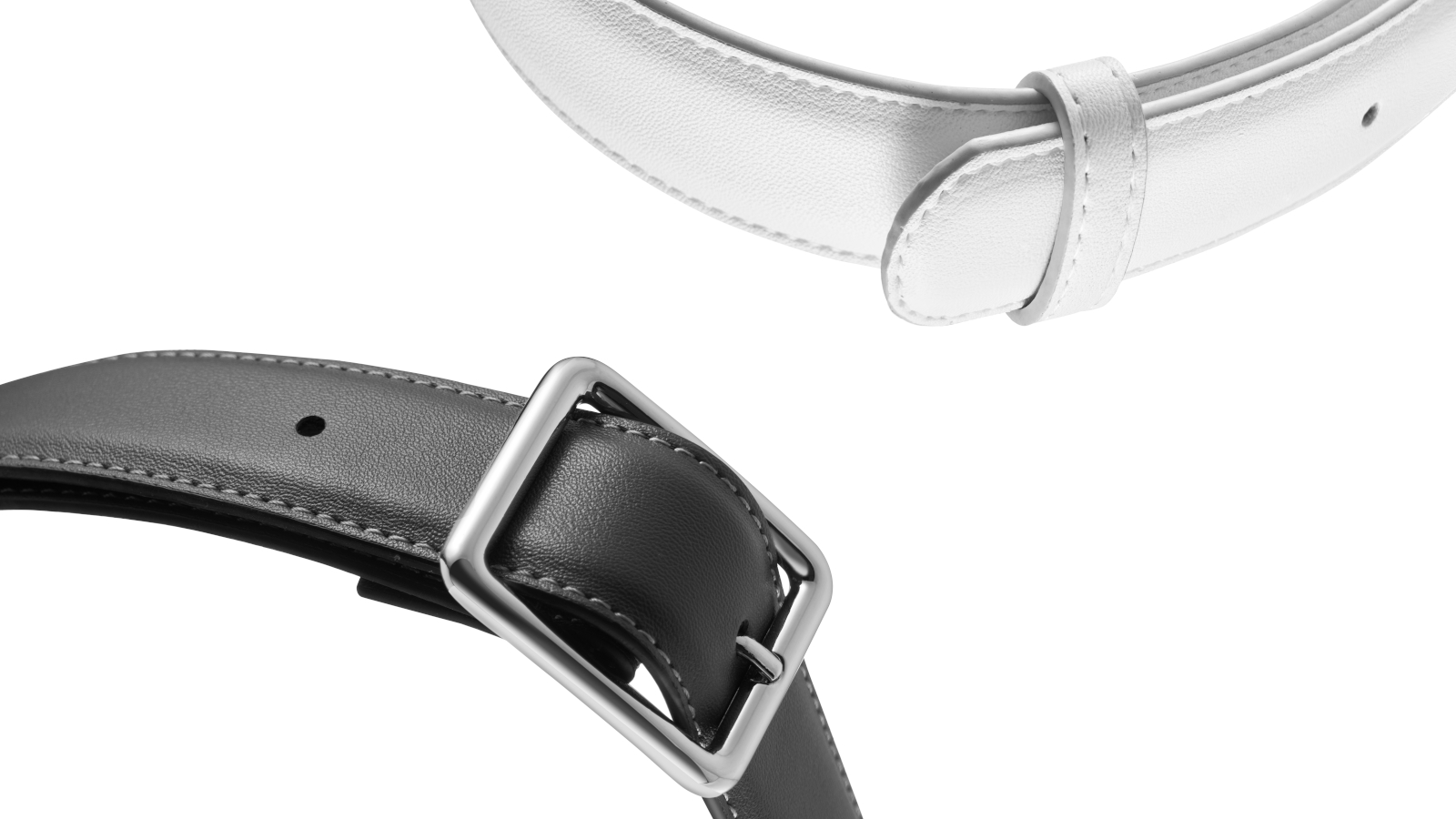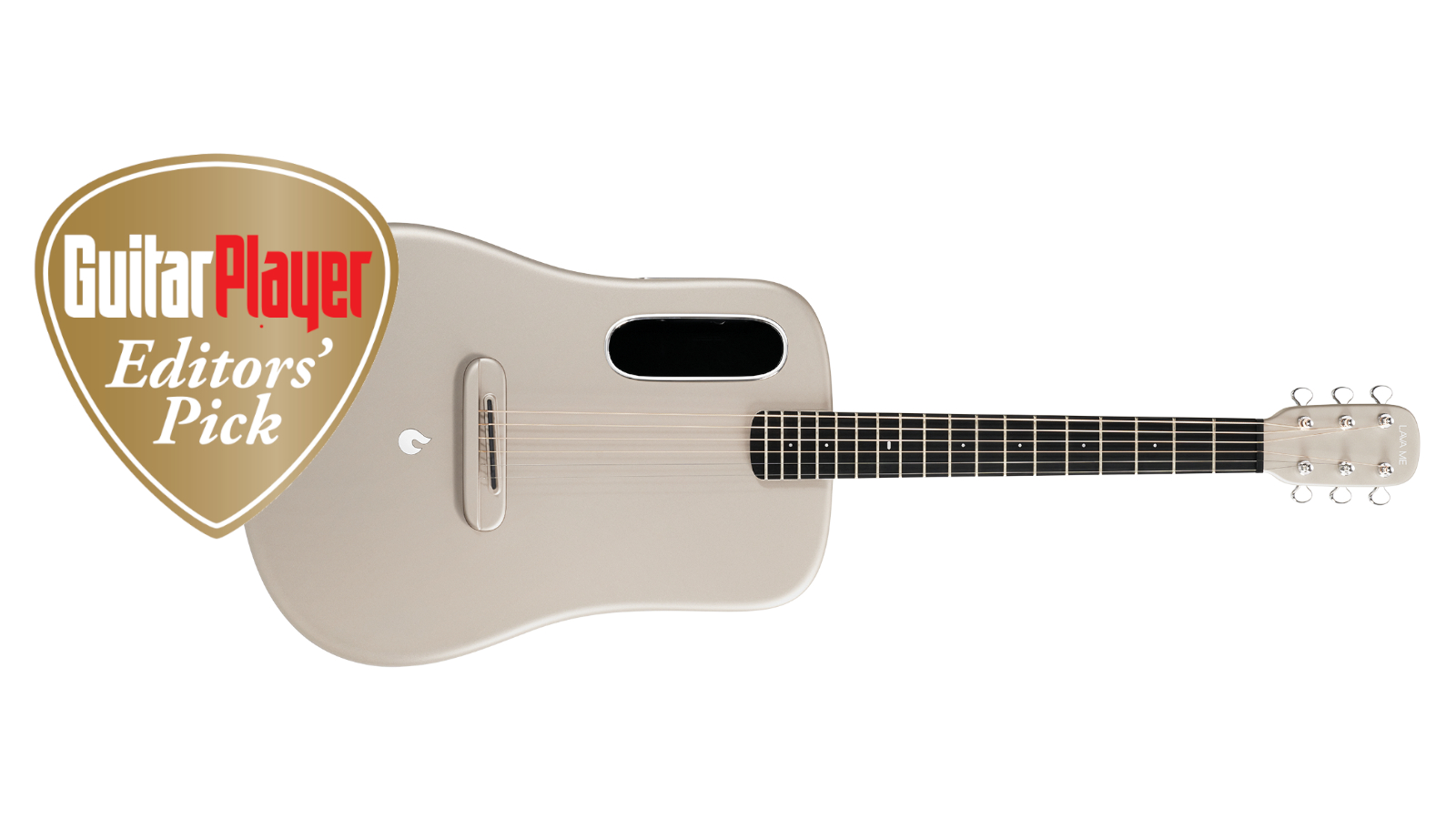GuitarPlayer Verdict
A brilliantly designed guitar in a travel-friendly size with the most advanced smart system we’ve seen to date.
Pros
- +
Deep acoustic sound
- +
Exceptional craftsmanship
- +
Great neck
- +
Ingenious locking strap system
- +
Insane feature set
Cons
- -
Long-term stability and durability of electronics
- -
Action a tad high and no truss-rod
- -
Amplified tone wetter than acoustic
You can trust Guitar Player.
The era of the smart acoustic-electric guitar is upon us, and Lava Music is developing some brilliant ideas on its first models.
They include the carbon fiber ME 3, on review, here as well as the Blue Lava, made with high-pressure laminate, which is up for review next month.
Both models feature the HILava system (HI = Human Interface) with L3 smart preamp, and it’s a game changer.
Traditionalists may sneer, but Lava is aiming squarely at progressive players
The system is loaded with apps that offer everything from internally actuated effects (no amp required) to a practice program, onboard recording and looping, all of it accessed with a multitouch display that functions like a smart phone.
Lava even created a social element to let users share original creations via the Lava+ app, which pairs the guitar with an actual smart phone and expands programmability.
Traditionalists may sneer, but Lava is aiming squarely at progressive players, and it makes sense to merge their two primary obsessions: smart phones and guitars.
Lava Music was founded in 2013 and introduced its uni-body carbon fiber design on the first ME (pronounced “me”) model in 2017, followed by the ME 2 and Pro.
All the latest guitar news, interviews, lessons, reviews, deals and more, direct to your inbox!
The ME 3 adds revolutionary smart technology with improved 4-Mass carbon fiber, designed for deeper bass and longer sustain.
Lava has created an extremely distinct body style, and their totally different take is good to see. I for one appreciate the Futurama factor.
Lava has created an extremely distinct body style
Although I ordered a blue-finished ME 3, I got gold and ended up loving the way the shiny finish added to the rectangular body’s spacecraft aesthetic, with the oval sound port located in the upper bout.
The one-piece body feels sturdy and smooth all the way down the finished neck, to the headstock loaded with supple silver tuners.
The shape is a bit weird to handle at first, and it’s likely to slide around on your lap unless secured with a Lava Ideal Strap 2 (sold separately for $59).

The design is ingenious and the strap is great. Once that’s locked and loaded, the guitar’s ergonomics become pretty awesome.
The relatively small 38-inch-long body is easy to manage (a 36-inch version is also available). When it’s strapped on, it can be tilted upward for advantages in playability, like Eddie Van Halen did with his little belly block, and the volume from the player’s perspective increases as well.
Bells and whistles don’t mean much without a good organic tone, so ME 3’s first test was totally acoustic.
The sound was much bigger than expected, with a bass boom that belies the body size. The top end has a silky shimmer, and sustain is plentiful. The mids are heavily scooped, as if somebody set a smile curve on a graphic EQ.
Among guitar heroes, the carbon fiber sound is most closely associated with Kaki King. It’s plenty percussive but has a more rounded, deep-dish kind of tone.
The sound when strummed was brushier than wood, which has a snappy attack and strong middle presence. Fingerstyle notes are precise but a bit mellowed.
Carbon fiber is, of course, extremely stable amid fluctuations in heat and humidity. Get that neck set right and it stays that way.
But there was a downside here in terms of adjustability. I found the factory action to be tad high, and the remedy suggested in the manual requires shaving down the underside of the saddle with heavy sandpaper.
It would be nice if a second saddle or perhaps a shim were included to raise action to preference rather than the other way around.
The frets and fingerboard are nice and precise
A short scale length combined with high action makes chords a bit difficult, but using a capo at the second fret helps a ton.
The frets and fingerboard are nice and precise. The neck itself is a joy to hold, and the advanced profile with a fine finish makes sliding up and down feel super sleek.
As for the ME 3’s electronics, all I can say is “Holy Toledo!”
We’ve seen actuator-driven internal effects on acoustics for a while now, starting with the ToneWoodAmp, leading to Yamaha’s TransAcoustic and on to the first smart guitars from Lâg.
The HILava system ups the ante significantly, as it’s essentially like having a rudimentary smartphone embedded in the instrument.
Reach inside the sound port to find the on/off/sleep/wake button.
The only other physical control is a master-volume flywheel. Everything else is indicated by graphics that appear on a 3.5-inch multitouch screen facing up at the player from the top side.
HILava delivers an immersive experience without a mobile connection, but for activation it immediately asks the user to connect to the Internet via Wi-Fi.
Record up to four tracks on Loops and adjust the sound level of each independently
Download the Lava+ app to your phone, register a Lava ID with an email address, and then scan the QR code to activate.
Now you’re a member of Lava’s online community, where players around the globe share trending grooves and original recordings created with the onboard Loop and Record apps.
Record up to four tracks on Loops and adjust the sound level of each independently. Compared to the acoustic tone, the recordings are somewhat tinny and heavy on effects, but the app is great for capturing ideas, and it’s convenient because the system auto-syncs your music into Lava+ via LavaCloud.
It also keeps track of everything from total playing time to your favorite effects templates.

These effects sound amazing in this guitar, and they’re outrageously fun, with great graphic depictions.
I could get lost in the swirling reverbs, delays and reverse delays that populate Infinite Universe, Black Hole and Moonwalk all night long, and spend days digging into the tremolos, phasers and flangers that form the foundation for Lollipop, Shadow and Mushroom.
Better still, you can edit them and put favorites into templates for ready recall.
While the Practice app isn’t perfect, it’s crazy cool. Choose from one of the five headings – Chord Transition, Strumming, Scale Training, Ear Training and Single Note – and then try to perform at a given tempo.
These effects sound amazing in this guitar, and they’re outrageously fun
Lava’s “smart detection” indicates how well you did. It’s a fun way to learn and improve.
Even at the highest level, onboard effects remain an enhancement behind the acoustic tone.
But the script flips once the ME 3 is plugged into an amp. The effected sound becomes much more pronounced, and the booming bass of the acoustic box surrenders to the brighter, more midcentric piezo pickup tone.
You can change the EQ curve, choose a line out-only effect like Slow Soul, or ditch the effects altogether and go with one of the impulse-response presets designed strictly to shape the line signal.
But there is no global wet/dry control, and effects don’t work once an IR patch is selected to make the guitar sound more like its acoustic self.
That would be a welcome update for stage performers.
In the final analysis, there is much to love here, but also plenty of room for improvement.
HILava is the most advanced smart system we’ve seen to date, and it’s easily the most fun to operate.
The guitar itself is brilliantly designed in a travel-friendly size, with exceptional precision craftsmanship.
Progressive players will flip for it the way so many car owners flip for the Tesla. On the other hand, so much of what’s on offer here relies on that flexible HILava system, with its amazing apps.
Progressive players will flip for it the way so many car owners flip for the Tesla
What happens when that groovy electronic gadget malfunctions or stops altogether beyond the warranty?
For that matter, the ME3 is designed more for personal companionship than a grand stage presentation, which somewhat limits its usefulness, even while it opens a universe of opportunities for songwriting, recording and sharing.
For now, suffice it to say that Lava may be an outlier, but if the smart guitar takes off and the company plays its cards right, the sky is the limit.
GP applauds Lava Music’s innovative spirit and gives the ME 3 an Editors’ Pick Award.
Tune in again next month when we take a look at the Blue Lava.
Specifications:
- NUT: Fiber composite, 1.73” wide
- NECK: AirSonic 2 carbon fiber
- FRETBOARD: High pressure laminate, 23.94” scale
- FRETS: 18
- TUNERS: Lava-designed ultra light aluminum.18:1 ratio
- BODY: AirSonic 2 carbon fiber with Super AirSonic carbon fiber top
- BRIDGE: High performance fiber composite
- ELECTRONICS: HILava system with L3 smart preamp and FreeBoost 2.0 effects actuator, 4G memory, 32G storage
- CONTROLS: Volume wheel and on/off/sleep/ wake button inside sound port. 3.5” multitouch screen on top side with status, menu and app icons
- ONBOARD APPS: Tuner, metronome, recorder, loops, practice, effects
- EFFECTS: 50+ presets consisting of: reverb, delay, reverse delay, chorus, tremolo, phaser, flanger, ring mod, octave, stutter, wah, slow gear, pitch shift, shaper filter, distortion and impulse response for line out
- LAVA+ APP: Syncs with HILava system via LavaCloud to keep track of effects templates, favorite grooves, practice summary, music, pictures, and devices plus top and trending recordings by other Lava players
- CONNECTIVITY: Wi-fi, Bluetooth, ¼” output jack, USB-C jack for charging, contact charging available via Space Charging Dock (sold separately; $149 for 38”, $129 for 36”)
- POWER: 8,000 mAh/3.8V lithium-ion battery (up to nine hours of playing time), USB-C to USB-C and USB-C to USB-A cables provided, 15W USB-C charging adaptor not included
- FACTORY STRINGS: Elixir Nanoweb .012–.052
- WEIGHT: 4.96 lbs (as tested)
- BUILT: China
For more information visit Lava Music.
Jimmy Leslie is the former editor of Gig magazine and has more than 20 years of experience writing stories and coordinating GP Presents events for Guitar Player including the past decade acting as Frets acoustic editor. He’s worked with myriad guitar greats spanning generations and styles including Carlos Santana, Jack White, Samantha Fish, Leo Kottke, Tommy Emmanuel, Kaki King and Julian Lage. Jimmy has a side hustle serving as soundtrack sensei at the cruising lifestyle publication Latitudes and Attitudes. See Leslie’s many Guitar Player- and Frets-related videos on his YouTube channel, dig his Allman Brothers tribute at allmondbrothers.com, and check out his acoustic/electric modern classic rock artistry at at spirithustler.com. Visit the hub of his many adventures at jimmyleslie.com

